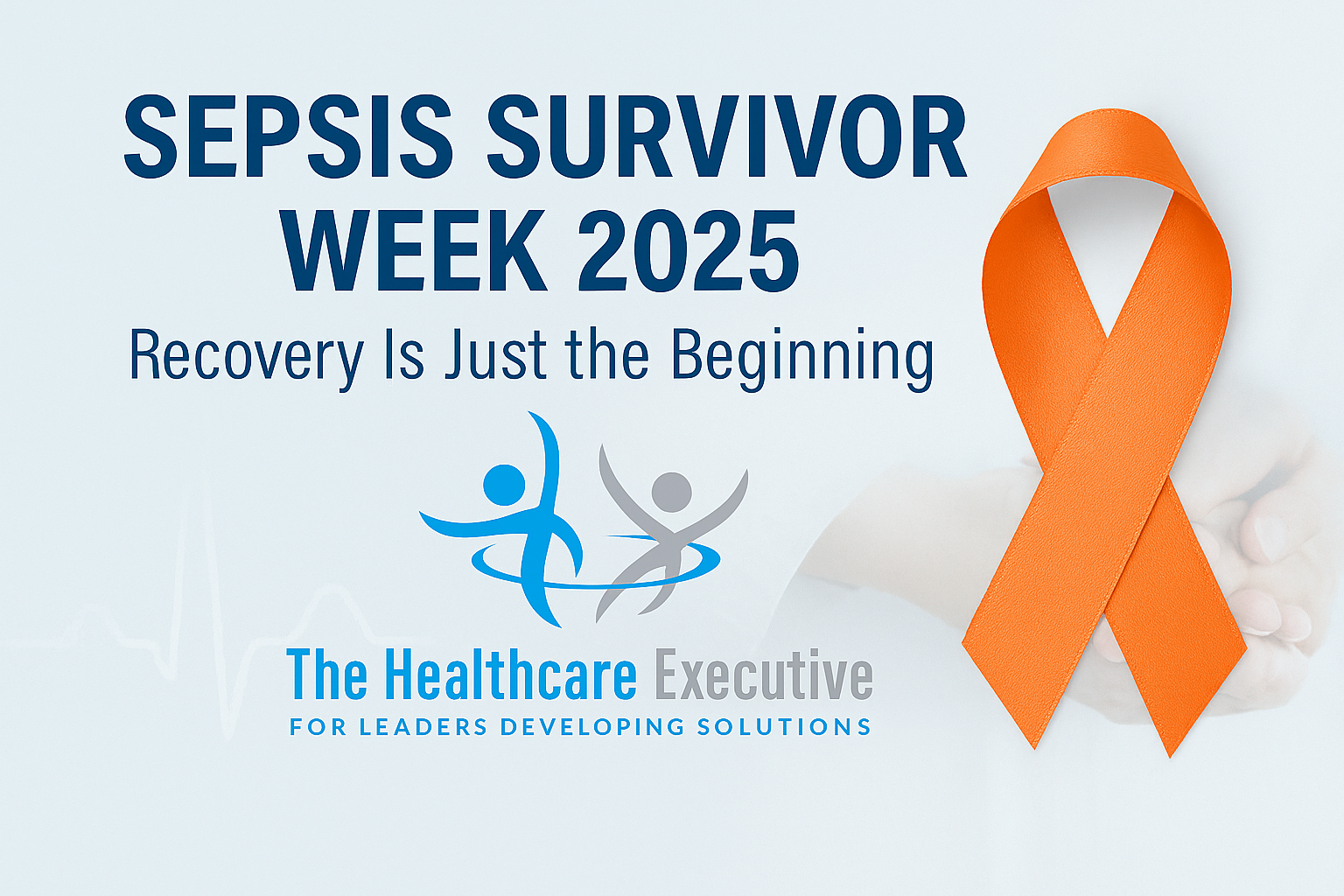Sepsis Survivor Week 2025: Recovery Is Just the Beginning

- Posted by Greg Wahlstrom, MBA, HCM
- Posted in Health Observance Calendar
Redefining Post-Sepsis Care Through Executive-Led Recovery Pathways
Published: February 17, 2025
Every February, Sepsis Survivor Week honors the strength and resilience of individuals who survive one of the most dangerous medical conditions in modern healthcare. While awareness around sepsis recognition has improved, the post-sepsis experience remains a vulnerable and often overlooked chapter in patient recovery. Survivors frequently face long-term physical, cognitive, and emotional challenges—collectively referred to as post-sepsis syndrome. Healthcare executives must ensure their systems are equipped to support long-haul recovery and continuity of care. This includes building dedicated recovery pathways, integrating behavioral health services, and expanding outpatient follow-up care. Organizations like the Sepsis Alliance emphasize the need for life-after-sepsis models that are as robust as acute care protocols. Strategic leadership must reframe sepsis care as a continuum—not a single episode of survival.
For many survivors, the road to recovery includes recurring hospitalizations, undiagnosed fatigue, depression, and difficulties returning to work or daily life. Executives must direct resources toward multidisciplinary care teams that include physicians, pharmacists, social workers, and mental health professionals. Hospital systems can partner with primary care networks to create standardized discharge plans and post-sepsis monitoring programs. The development of recovery clinics modeled after those for stroke or cardiac patients may offer a framework for scalable implementation. Institutions such as Johns Hopkins Medicine have pioneered sepsis care integration into long-term health planning. Technology, including EHR flags and automated patient outreach, can improve continuity and reduce readmission risk. Leadership accountability in post-sepsis strategy requires measurable outcomes tied to survivor quality of life.
Addressing inequities in sepsis outcomes and recovery is critical for inclusive executive leadership. Studies show that Black, Hispanic, and low-income patients experience worse post-sepsis outcomes due to disparities in access, education, and social support. Executives must use data to identify recovery gaps and deploy targeted interventions in underserved populations. Community health workers, remote care navigators, and culturally tailored education programs are essential tools. By partnering with organizations like the CDC and state-level quality collaboratives, hospitals can improve early detection and ensure survivors do not fall through cracks post-discharge. Telehealth and mobile follow-up clinics should be expanded in rural and high-risk zip codes. Equity in sepsis care means committing to equity in sepsis recovery—and that begins with executive design and investment.
Sepsis Survivor Week 2025 invites healthcare leaders to rethink survivor support as a strategic priority. Executives must drive culture shifts that prioritize long-term recovery over short-term discharge. Boardrooms must embrace survivor stories as catalysts for innovation, not outliers in policy review. Integrated post-sepsis protocols should be embedded into system goals, budget cycles, and workforce development plans. Preventing long-term complications not only improves outcomes but also reduces avoidable costs and reputational risk. Leadership in this space is not defined by crisis response—it is defined by continuity, compassion, and clinical strategy. Recovery is just the beginning, and healthcare executives must lead what comes next.
Explore how your leadership team can develop post-sepsis recovery pathways, invest in survivor-centered care, and promote equity at every phase of healing. Our latest article offers evidence-based guidance for hospitals committed to quality improvement, long-term outcomes, and community reengagement after sepsis. Join us in making 2025 the year we transform survival into sustained wellness.
Discover More
For related strategies on redesigning long-term recovery in hospital systems, read our post on trauma-informed leadership.



